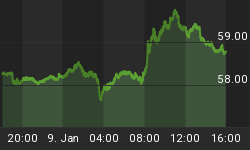It has been a difficult week for the precious markets as gold dropped by 3.2% and silver by 3.9% which means that gold and silver are now back to price levels last seen in July and August respectively. Platinum and palladium also suffered price falls of 3.4% and 2.1% respectively.
GoldMoney's customers, who hold almost 21 tons of gold in storage worldwide, increased their trading activity by 14% compared to last week which continues a trend of steadily increasing trading levels over the last 4 weeks. The allocation of trading between the different metals remains stable with 56% allocated to gold. Customer trading in both gold and silver moved to a significant net buy compared with last week's net sell. However, general sentiment remained under pressure with the ratio of buyers to sellers falling to 0.98 from the previous week's 1.53.
GoldMoney's Head of Business Development Andrew McGowan said: 'Despite the fall in ratio of buyers to sellers, we've seen some significant buy trades this week which moved the overall net purchase of precious metal across all our customers to its highest USD value since August.'
Commenting on market mood, GoldMoney's Head of Research Alasdair Macleod said there is very little doubt that it has been an uncomfortable week for long-term gold investors and the consensus is uniformly bearish. The event of the week was the release of the FOMC minutes, but Alasdair says that of greater relevance is the threat to 'twist' that tapering implies: 'in other words yields on bonds might be free to rise relative to close-to-zero overnight rates. And if bond yields rise, that is bad for gold, or so the bears argue.
'This simple logic is blind to two overriding facts: adjusted for the increase in fiat currency, gold is now at a discount of 34% to where it was pre-Lehman crisis, and things have if anything become far worse since then (see the chart below). Furthermore, we must be rapidly approaching the point where there is very little gold left in the West to supply the voracious Asian appetite. So both valuation and physical demand are totally ignored.

'There are many similarities between today's market sentiment and that of September 1999, when the gold price jumped 27% in just two weeks. The bullion banks were bearish with gold at $255. The consensus then was that it was going to go lower perhaps to $220, stock markets were hitting new highs with the dot-com boom, and price inflation was not a problem.
'The bear squeeze in September 1999 would have been more dramatic had the Bank of England and the Fed not used their still considerable bullion stocks to intervene and rescue the bullion banks from their short positions. If a similar bear squeeze develops today, it is unlikely the Western central banks will have enough gold available to control the market.'















